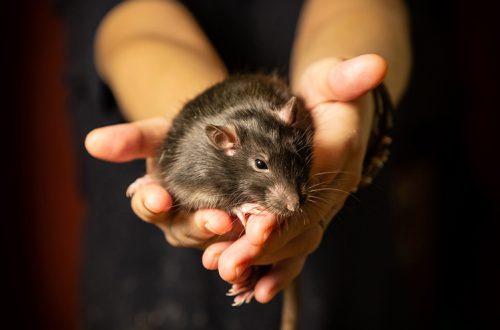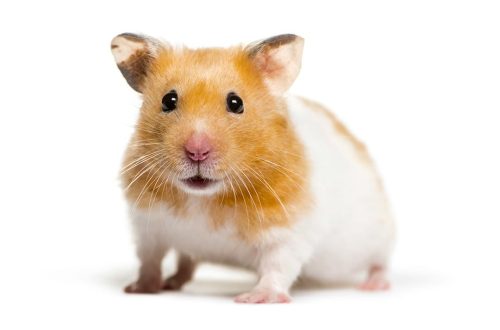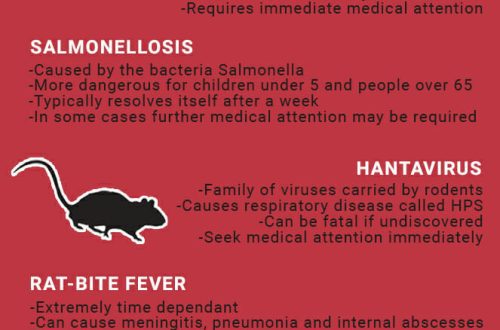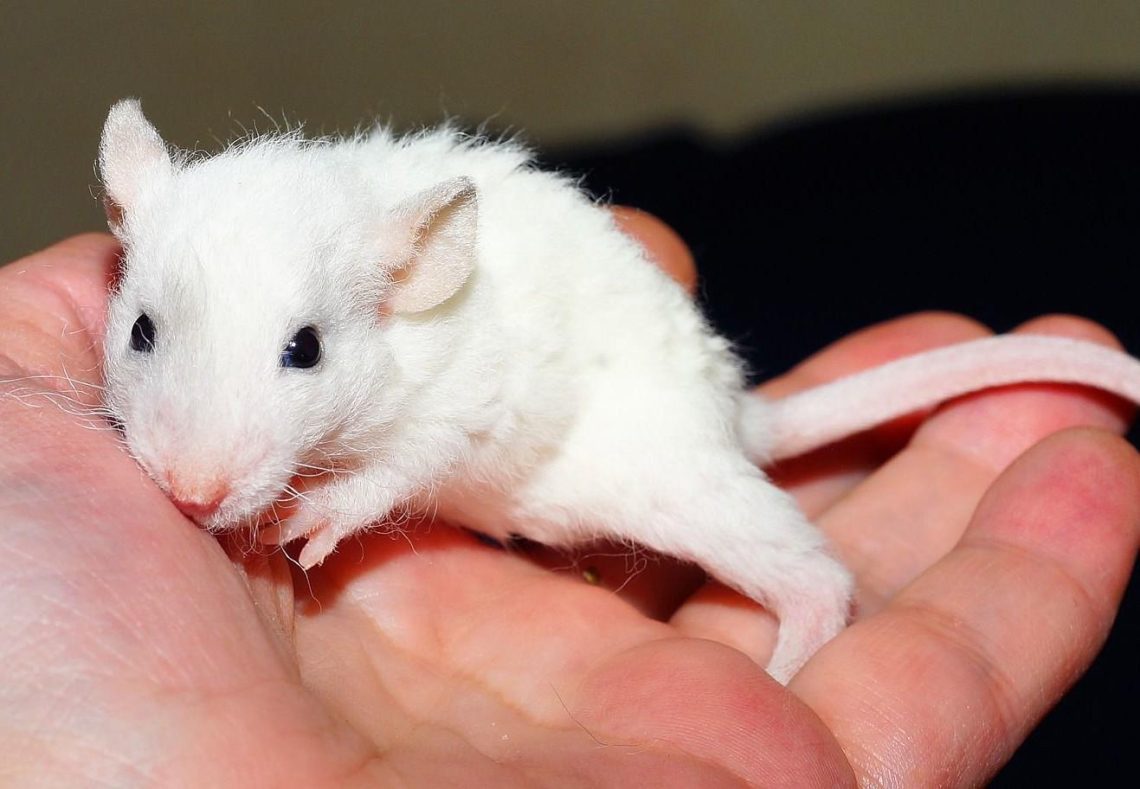
Frequently Asked Questions about Fancy Rat Diseases
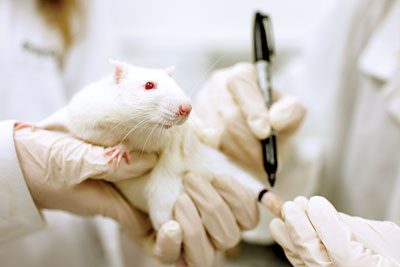
Our cute cute pet rats are periodically exposed to various rat diseases, the clinical picture of which causes anxiety and panic in inexperienced rat breeders.
A veterinarian should diagnose the disease, identify the cause and treat a furry friend, the owner can provide first aid to his beloved pet and immediately deliver the animal to the clinic. The owners of ornamental rats often have questions about what actions should be taken when the characteristic symptoms of various diseases appear, in this article we will try to answer some of them.
Contents
How to inject a rat
It is absolutely not difficult to give an injection to a rat, the main thing is to be confident in your abilities so that your hands do not tremble during the injection. It is necessary to prick rodents with insulin syringes, which rats perceive almost painlessly.
At home, the host can carry out subcutaneous and intramuscular injections, intravenous administration of drugs should be done by specialists.
For subcutaneous administration of the drug, it is necessary to pull off the skin fold with two fingers, most often in the withers area, inject the syringe parallel to the ridge and inject the solution.
With an intramuscular injection, the animal must be turned with its muzzle towards you, fix the abdomen and thigh with your fingers, pull back the paw and inject the syringe. It is better for fidgeting individuals to give injections with an assistant.
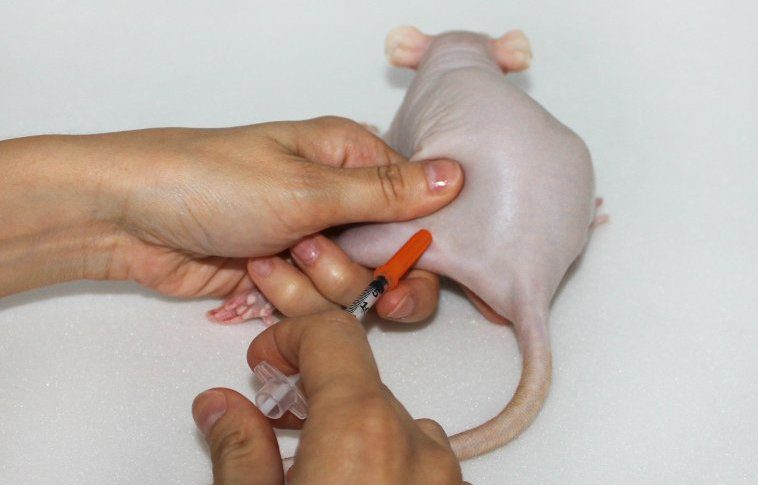
What to do if a rat chokes
You can understand that a rat has choked by the behavior of a domestic rodent: the animal tries to swallow something, profuse salivation appears, sometimes with foam, the pet lies motionless, hides, lowers its head, convulsions may be present. In such a situation, it is urgent to save the pet, the rats do not have a gag reflex, and the rodent can suffocate.
The owner needs to inject 0,1 ml of dexamethasone into the withers, then clean the oral cavity from food debris with a cotton swab, then gently shake the animal several times, firmly holding the rat head down. These manipulations should help the rat spit out or swallow the stuck food; after an attack, it is not recommended to feed the animal with coarse dry food for a day. In the near future it is desirable to show a little friend to a specialist, healthy animals should not choke on food, perhaps a domestic rat needs treatment.
What to do if a rat fell from a height
Decorative rats often fall from a height due to an oversight of the owners, such cases are fraught with bruises, fractures, internal bleeding, and strokes. If your rat has fallen from a height, then it is advisable to inject prednisolone 0,1 ml into the withers and drink Nurofen 0,5 ml children’s anesthetic syrup from an insulin syringe without a needle. After injections, it is necessary to examine the animal, check the integrity of the bones and skin, and the absence of bleeding. It is desirable for a pet to create a darkened calm atmosphere, add vitamins for rats to the diet, within a few days the animal should recover from shock.

In the presence of fractures, bleeding, impaired coordination, it is necessary to urgently deliver a fluffy rodent to a veterinary clinic, the animal will need an x-ray to determine the nature of the damage.
What to do if a rat breaks its leg
Domestic rats sometimes break the fragile bones of their limbs. In case of a fracture, the paw of the animal turns blue, swells, may be unnaturally twisted or hanging, an increase in local temperature is observed.
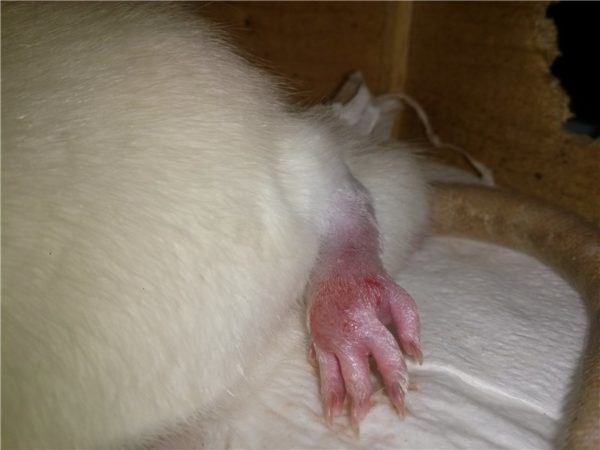
Limb fractures in rats grow together relatively easily, the pet must be relocated to a small cage without floors to reduce mobility.
Before a visit to a specialist, a rodent can be injected with 0,02 ml of meloxicam from an insulin syringe and smear the injured limb 2 times a day with Traumeel anti-inflammatory gel. For splinting and appointment, it is recommended to take the animal to a veterinary clinic. Within 2-3 weeks, the swelling subsides and the fracture heals safely.
What to do if the rat has blood in the urine
If a domestic rat pees with blood, this indicates pathologies of the genitourinary system as a result of hypothermia or diseases of the urinary tract. Rodents are prone to cystitis, kidney failure, urolithiasis, polyps and neoplasms of the kidneys and bladder.
The animal needs to be examined by a specialist, an X-ray examination for bladder stones and a laboratory examination of a urine sample, which must be collected in a sterile syringe and delivered to a veterinary clinic within three hours. Depending on the diagnosis, a rodent is prescribed a surgical intervention to extract stones, a course of antibacterial, diuretic and anti-inflammatory drugs.
What to do if the rat often hiccups
Decorative rat hiccups against the background of hypothermia, overeating, overexcitation, helminthic invasion. If the animal occasionally hiccups, do not worry, it is necessary to reconsider the diet and conditions of keeping the fluffy rodent, it will not be superfluous to carry out preventive deworming.
In the case of frequent hiccups with the addition of grunts, whistles, wheezing, heavy breathing, one can suspect the development of pneumonia in a pet. Hiccups in this case accompanies asthma attacks in a rat, a small animal must be urgently taken to a veterinary clinic. Inflammation of the lungs in decorative rats develops rapidly and can cause the death of a pet; a course of antibacterial, hormonal, anti-inflammatory and vitamin preparations is prescribed for the treatment of the disease.
What to do if the rat’s tail peels off or turns black
Peeling off of the tail and the appearance of dark scaly scales on it indicates insufficient cleanliness or the venerable age of the pet. Too dense scales, when lagging behind, can injure the skin, provoking the formation of wounds. In this situation, you can wet the rat’s tail with soapy water and clean it with a soft bristled baby toothbrush.
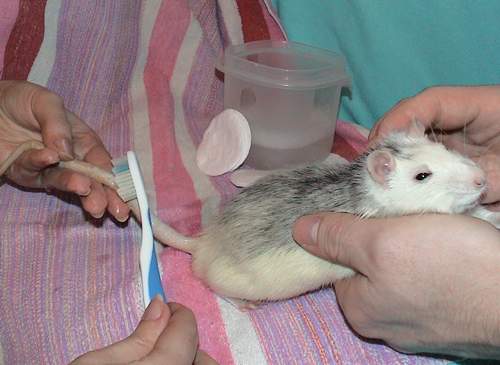
If the tip of the tail turns blue in a rodent, the air in the room is too dry, hypothermia, or a minor injury to the tail may be possible causes. Much more serious is the situation when the rat’s tail turned black, which indicates the development of necrotic processes. Treatment in this case can be carried out conservatively with the use of antibacterial drugs and anti-inflammatory ointments or surgically, which involves amputation of the tail.
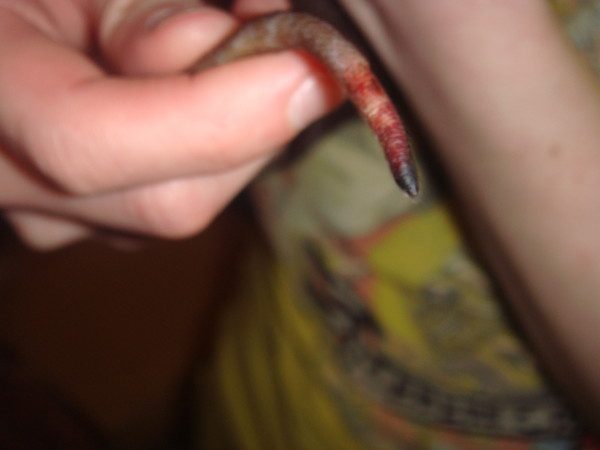
How is the tail amputated in a rat?
Amputation of the tail in decorative rats is carried out by veterinarians in the presence of serious indications for surgery: oncological diseases, necrosis, gangrene, tail injuries.
The operation is performed in a clinic using general anesthesia, hemostatic tourniquets and suturing. Postoperative wound treatment can be performed by the owner of the rodent at home. A week after the amputation, the specialist evaluates the degree of wound healing and removes the stitches.
Are rats vaccinated?
Domestic rats are not vaccinated.
Domestic rodents must be treated on time, pathologies in rats are characterized by a rapid course and, often, death. Love your pets, treat their rat sores in time. Take care of the animals and feed them deliciously, in such conditions your little furry friends will delight you with their amusing games and sincere love for a long time.
Frequently Asked Questions about Fancy Rat Diseases
4.5 (90%) 6 votes



